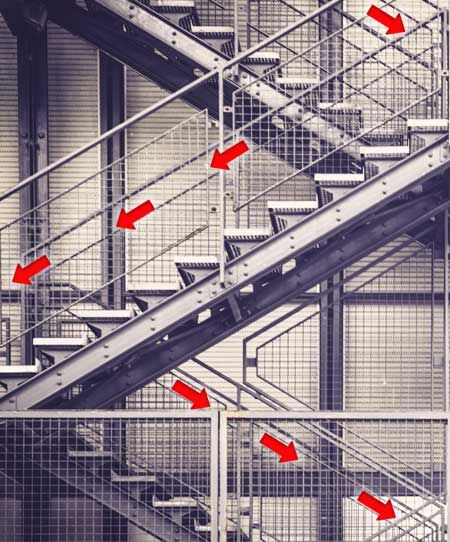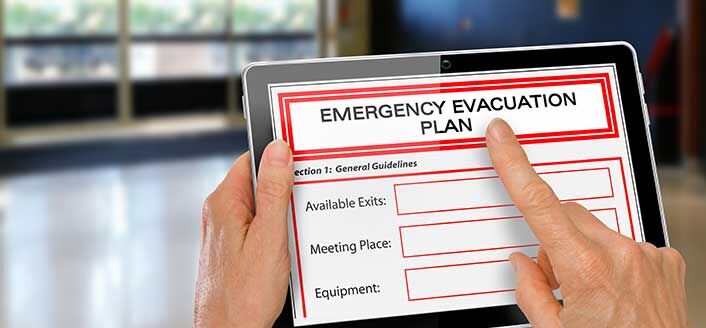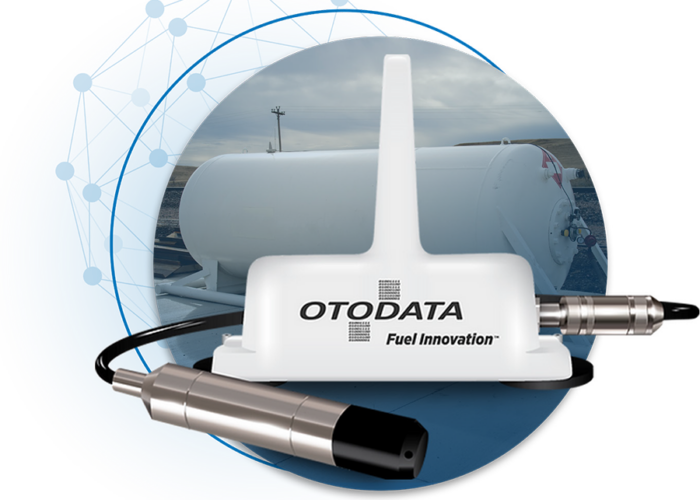Emergencies can happen without warning at any time. Disaster scenarios such as fire or flooding present uncontrolled variables that can place people in states of panic, hindering their ability to get to safety, quickly escalating the emergency. A lack of knowledge regarding proper evacuation procedures is a major contributor to these states of panic. A 2015 survey by the Federal Emergency Management Agency (FEMA) found that nearly 60% of American adults have not practiced what to do should a disaster occur by participating in a disaster drill or preparedness exercise at work, school, or home. Whether its an industrial warehouse full of manufacturing equipment or a skyscraper with hundreds of employees inside, property managers must ensure that a tried and tested evacuation plan is in place that can ease panic and lead tenants to safety during a worst-case scenario.
Resources such as the Life Safety Code from the National Fire Protection Association exist to help property managers devise an evacuation strategy to protect people based on building construction, protection, and occupancy features that minimize the effects of fire and related hazards. However, plotting a proper evacuation plan is only the beginning. To ensure safety in the workplace, an evacuation plan must be able to react dynamically to changes in the environment that are brought about by disasters.
Location Tracking to Account for Missing People
In emergency situations, it is often the swift and decisive actions that make the difference between a successful, orderly evacuation and unsafe conditions that can leave employees injured or trapped. This is where intelligent system design powered by the Internet of Things (IoT) can be of assistance. An IoT-enabled evacuation system can track employee movements during an emergency and automatically count those who have reached the designated muster, or gathering, point. If an employee goes missing during a disaster, an IoT system can quickly establish their whereabouts and either help them to safety or inform emergency services of their status. Employee ID badges outfitted with IoT sensors and built-in panic buttons can assist in location tracking and enable employees to signal when they are in need of help. In the case of an employee losing or forgetting their badge during evacuation, a connected phone app can allow them to signal their status and lead rescue workers to their location if necessary.
Connected Exit Signs that Direct Around Hazards
One company thats taking advantage of IoT connectivity is HEX, a Taiwan-based security and safety company specializing in fire evacuation safety within the fire protection industry. Using Long Range (LoRa) wireless platform technology, HEXs Dynamic Evacuation System analyzes the hazard potential of a facility during a fire accident and begins routing the safest optimal path for evacuation. Connected exit signs can be integrated throughout a facility to indicate the quickest and safest direction out of the premises. In case of fire or smoke blocking a previous evacuation route, the connected exit signs update in real-time to help people navigate around these complex hazardous zones. By enhancing peoples decision making and shortening the egress route, the HEX Dynamic Evacuation System significantly increases employees chances of survival in an emergency.
Protect Your People During an Emergency with Aeris
Aeris end-to-end modular IoT solution provides the building blocks that allow property managers to establish and manage a robust and efficient facility evacuation plan. With IoT connectivity, occupants know that they are covered in the case of an emergency and have greater assurance that they will be found by rescue teams in time if they are unable to exit the building.
The Aeris Connectivity Platform provides an in-depth information window into the status of the entire IoT deployment, giving the evacuation management team the tools to work more efficiently during an emergency when they know how many people have reached the muster point and where to find those who have not. With an efficient, versatile IoT system that provides real-time updates and visibility, building evacuation can happen as quickly and efficiently as possible, minimizing the risk of employee injury.
To learn more about Aeris IoT and how it can significantly improve your buildings evacuation system, contact us today.




